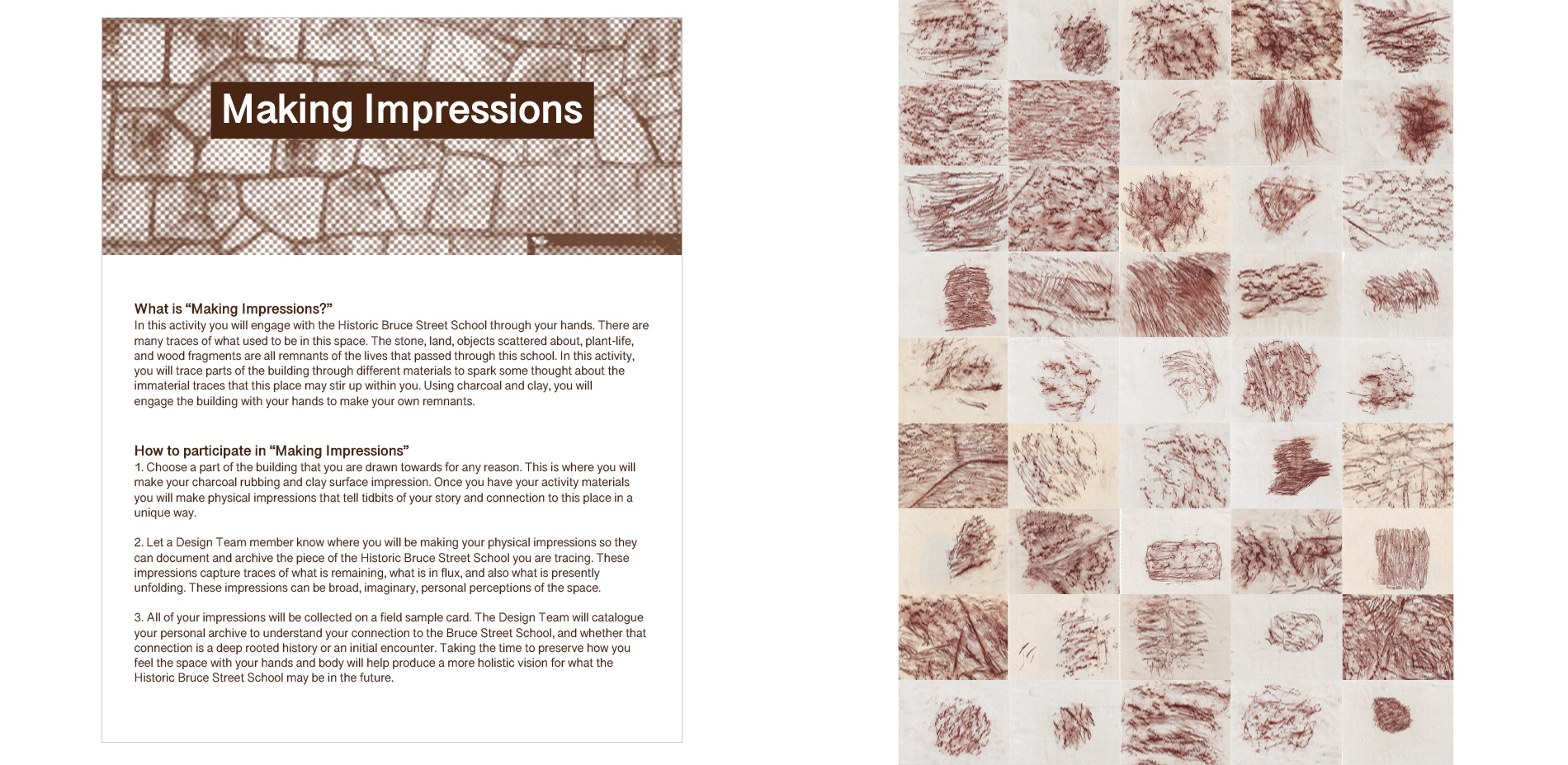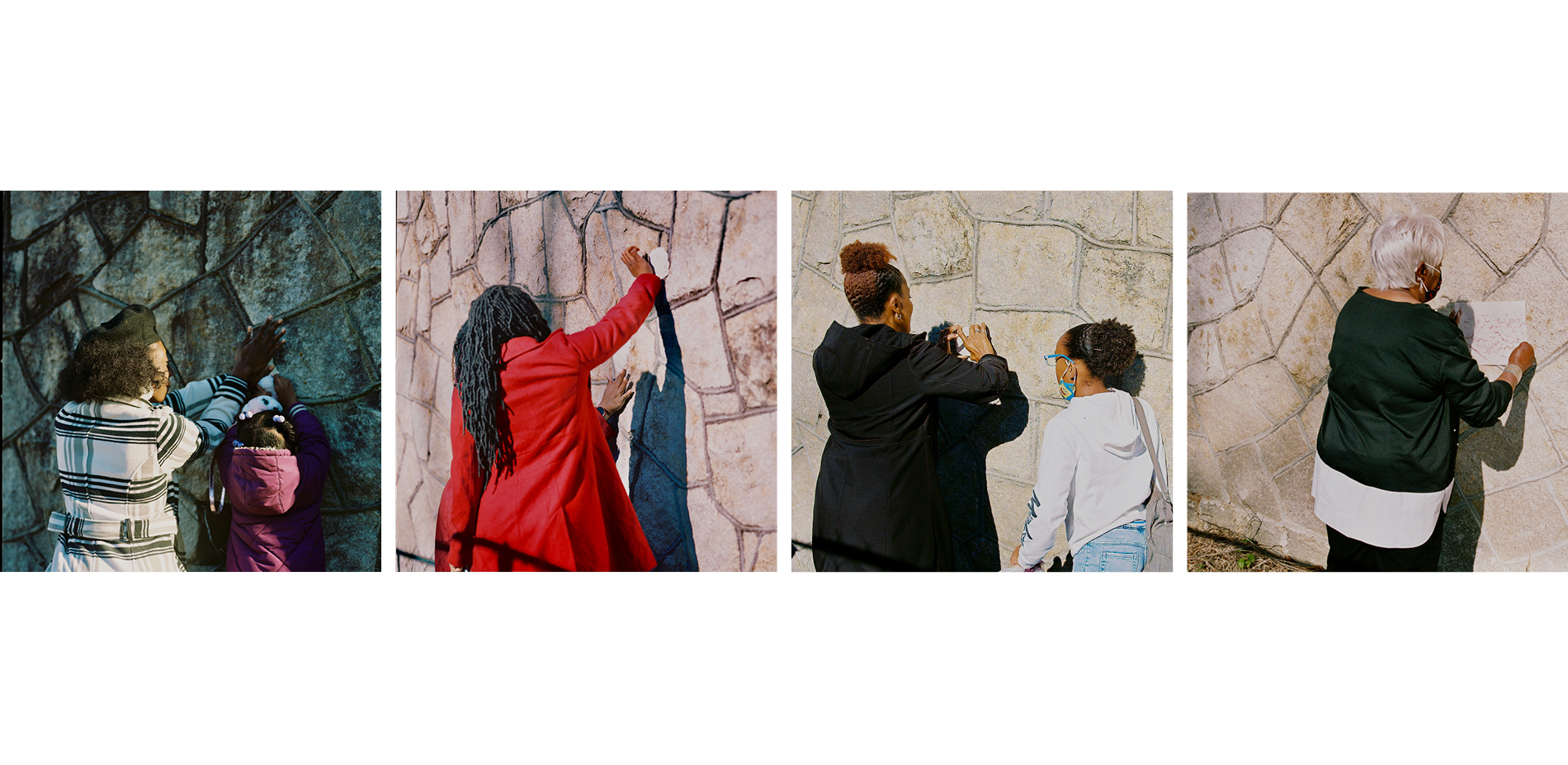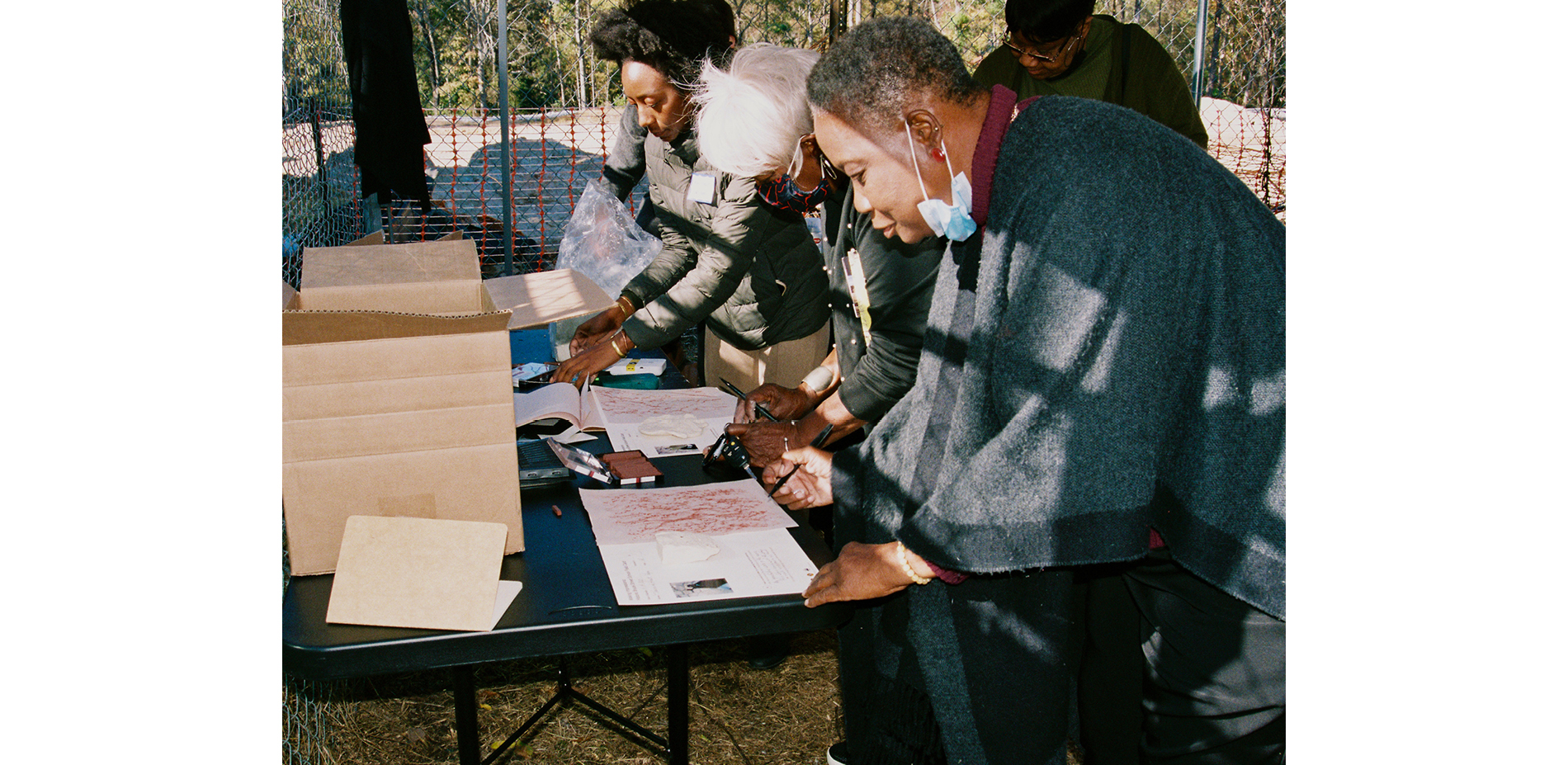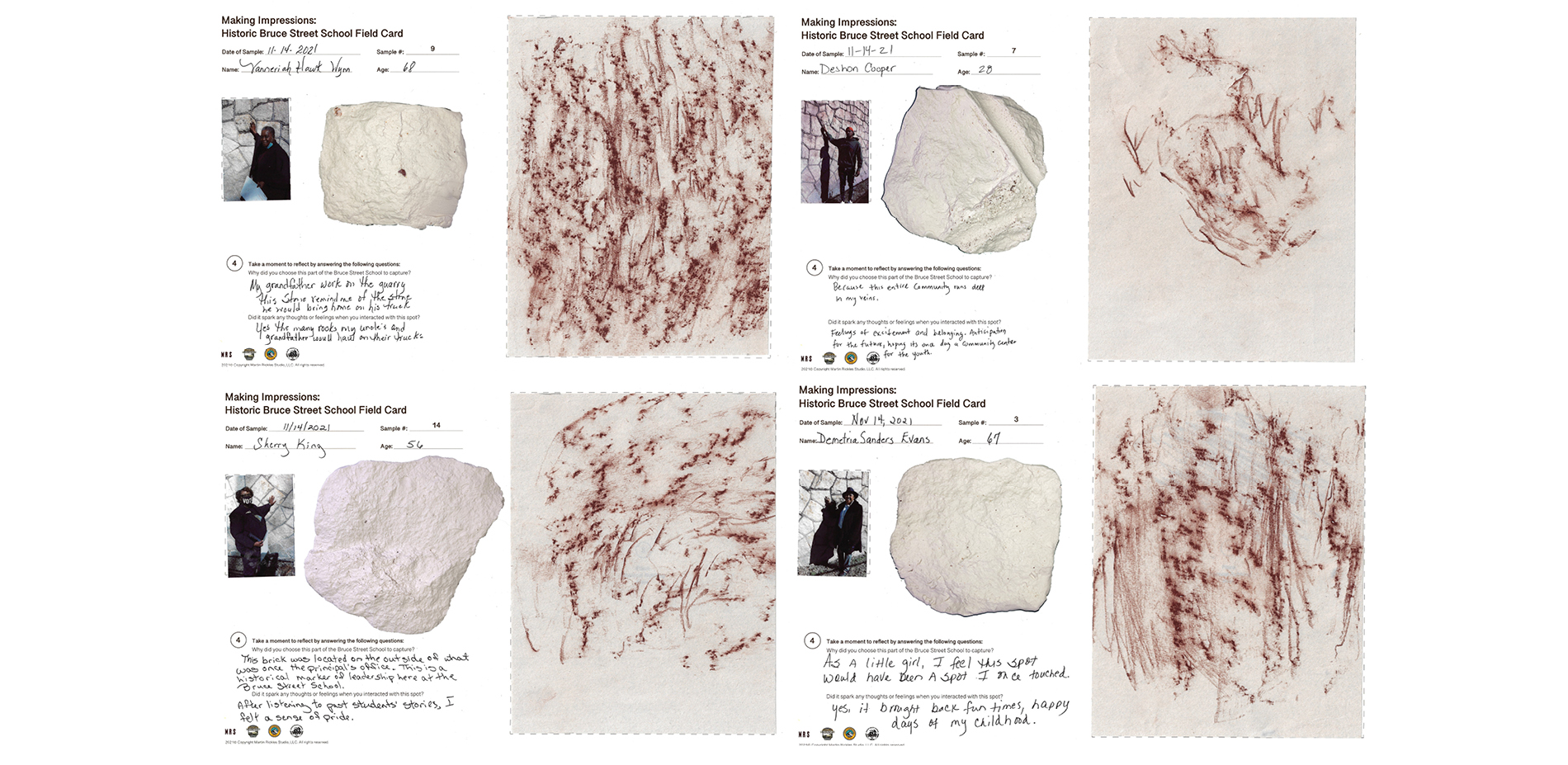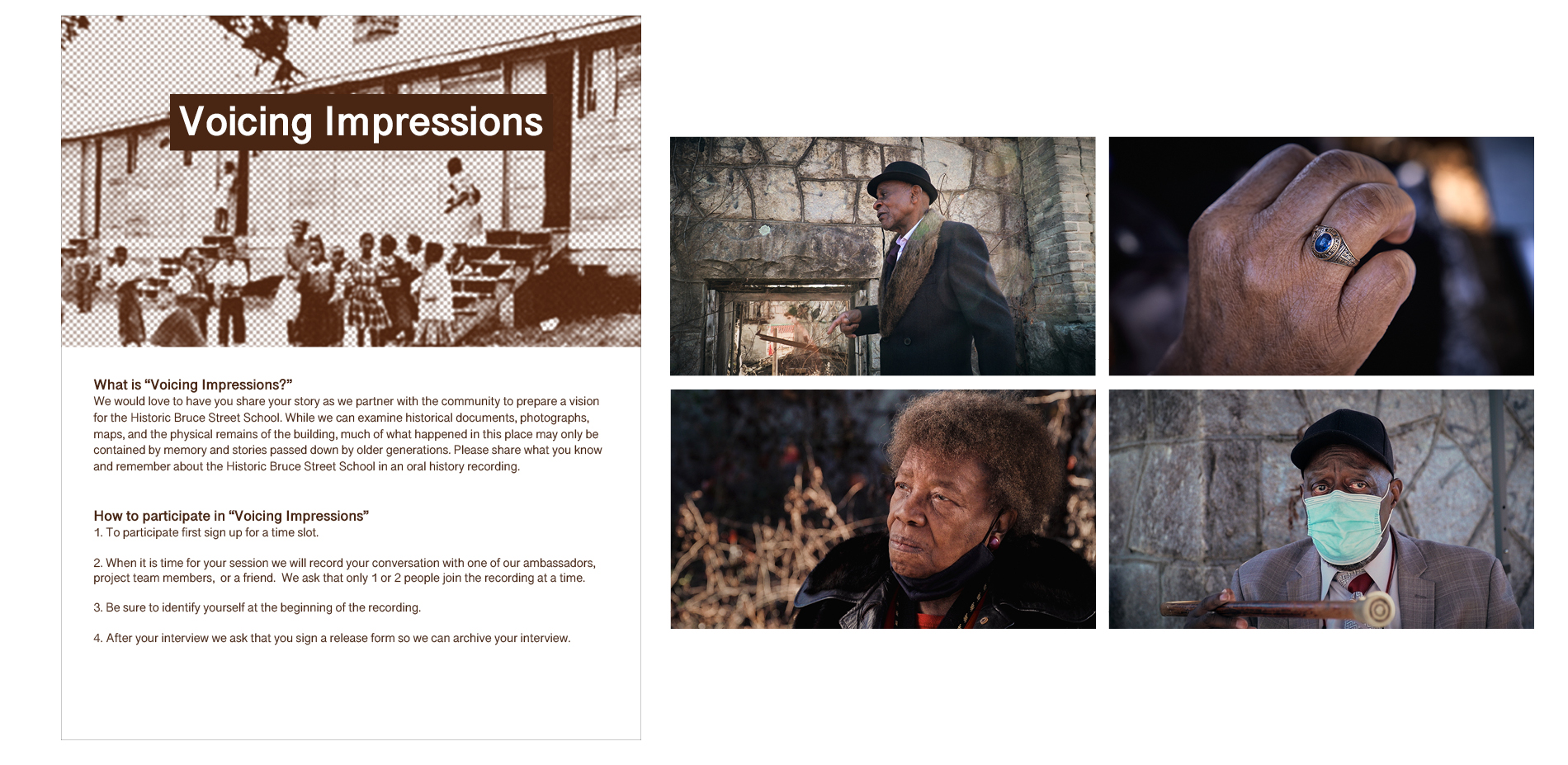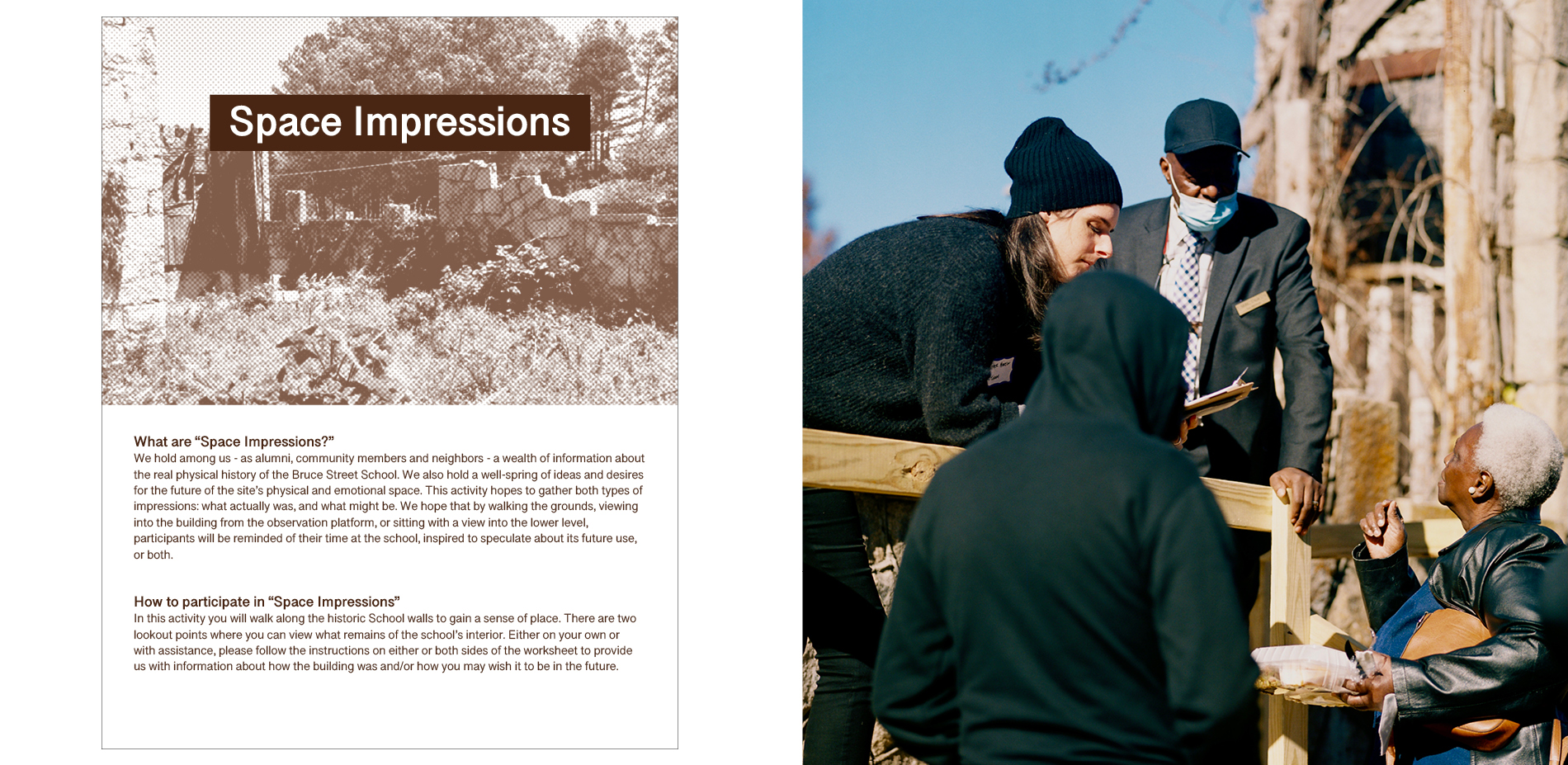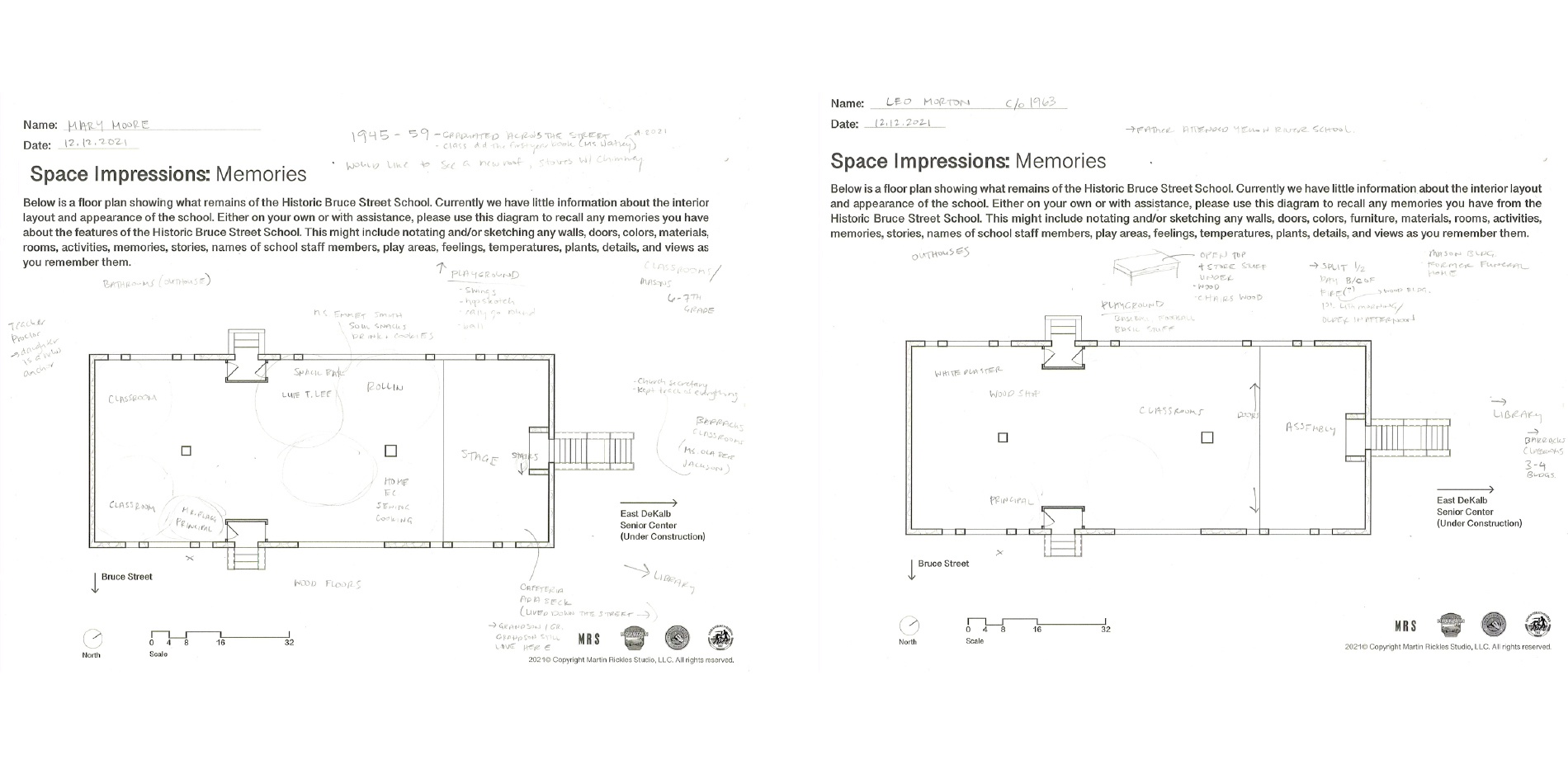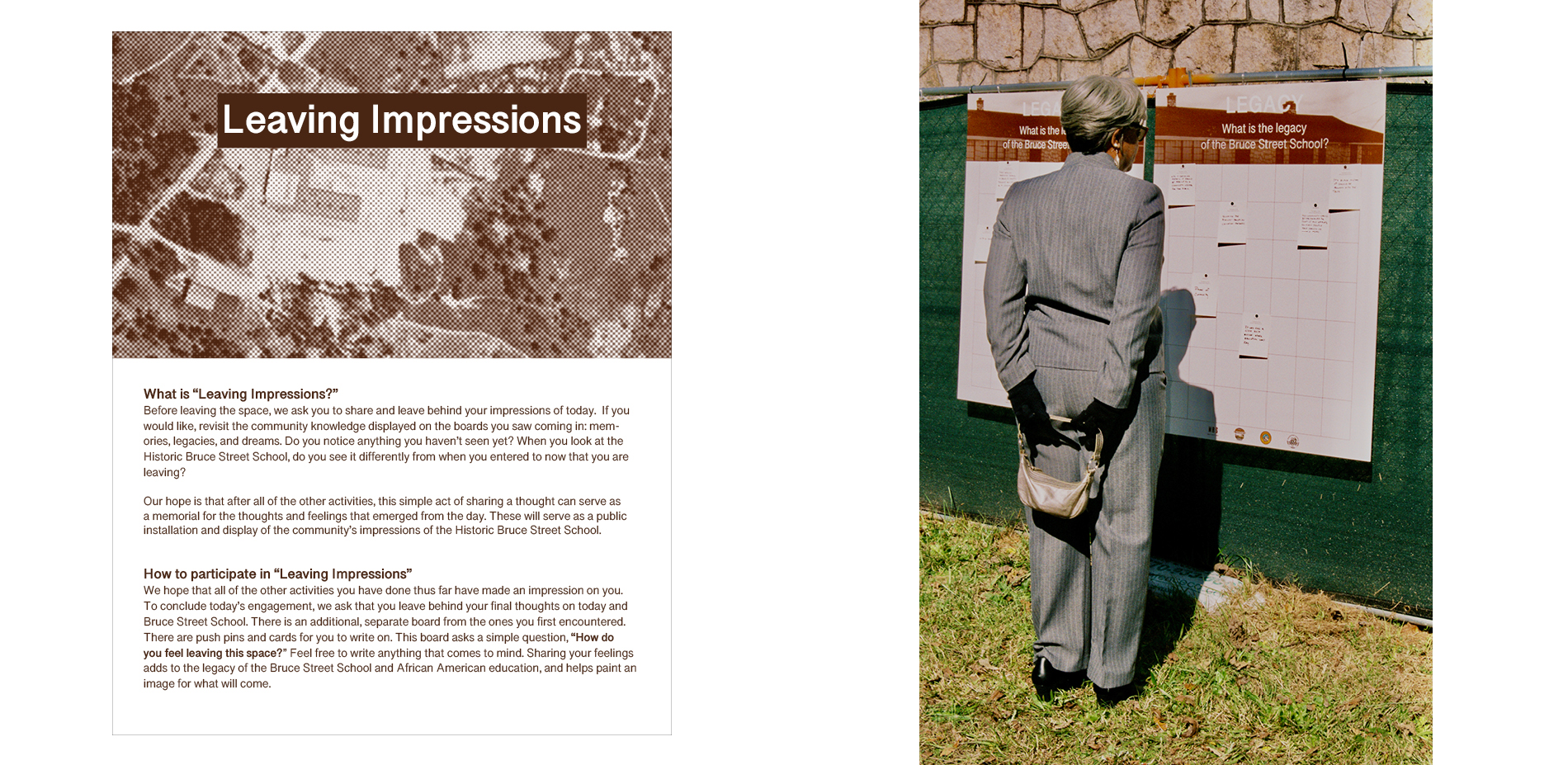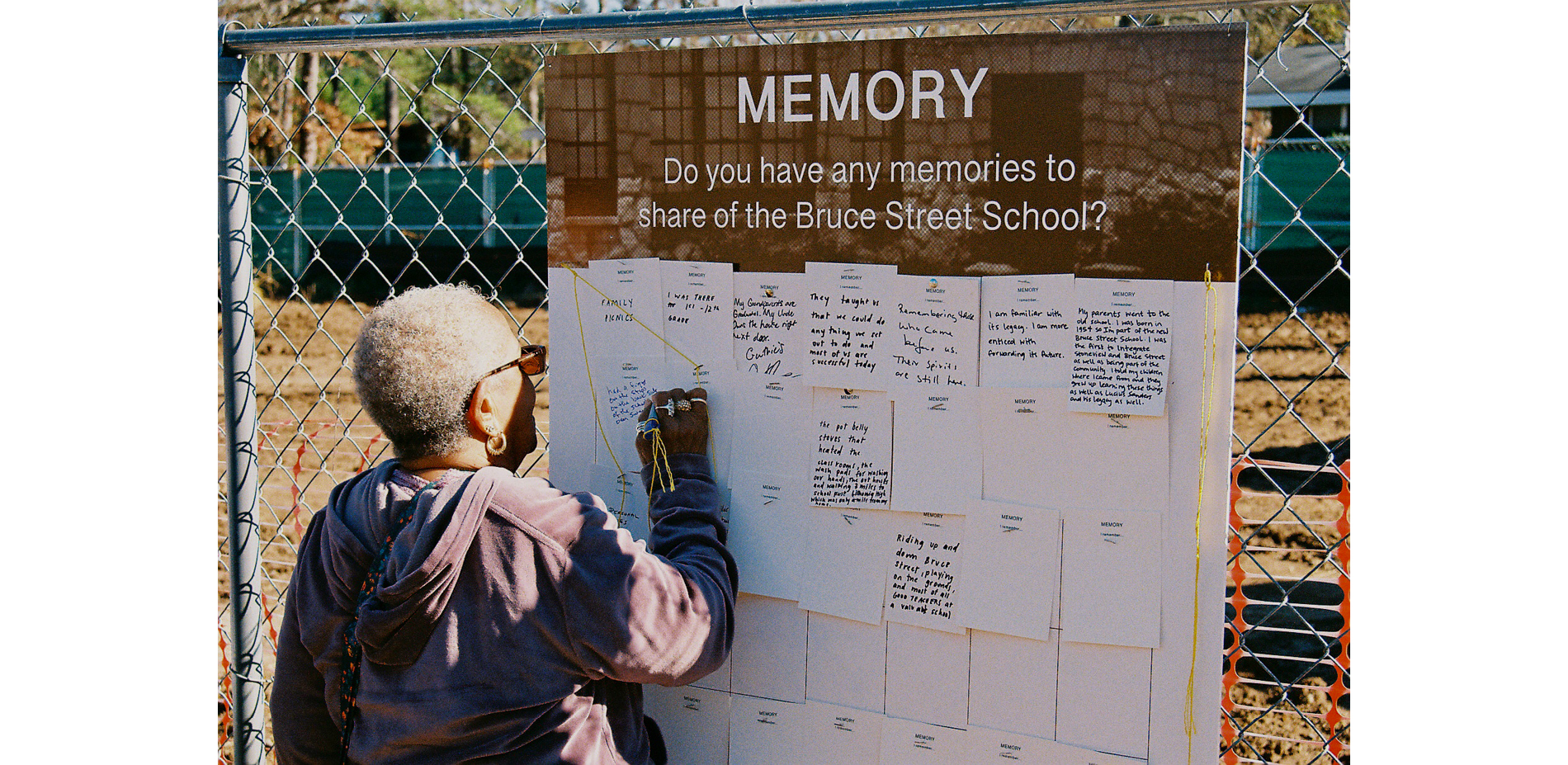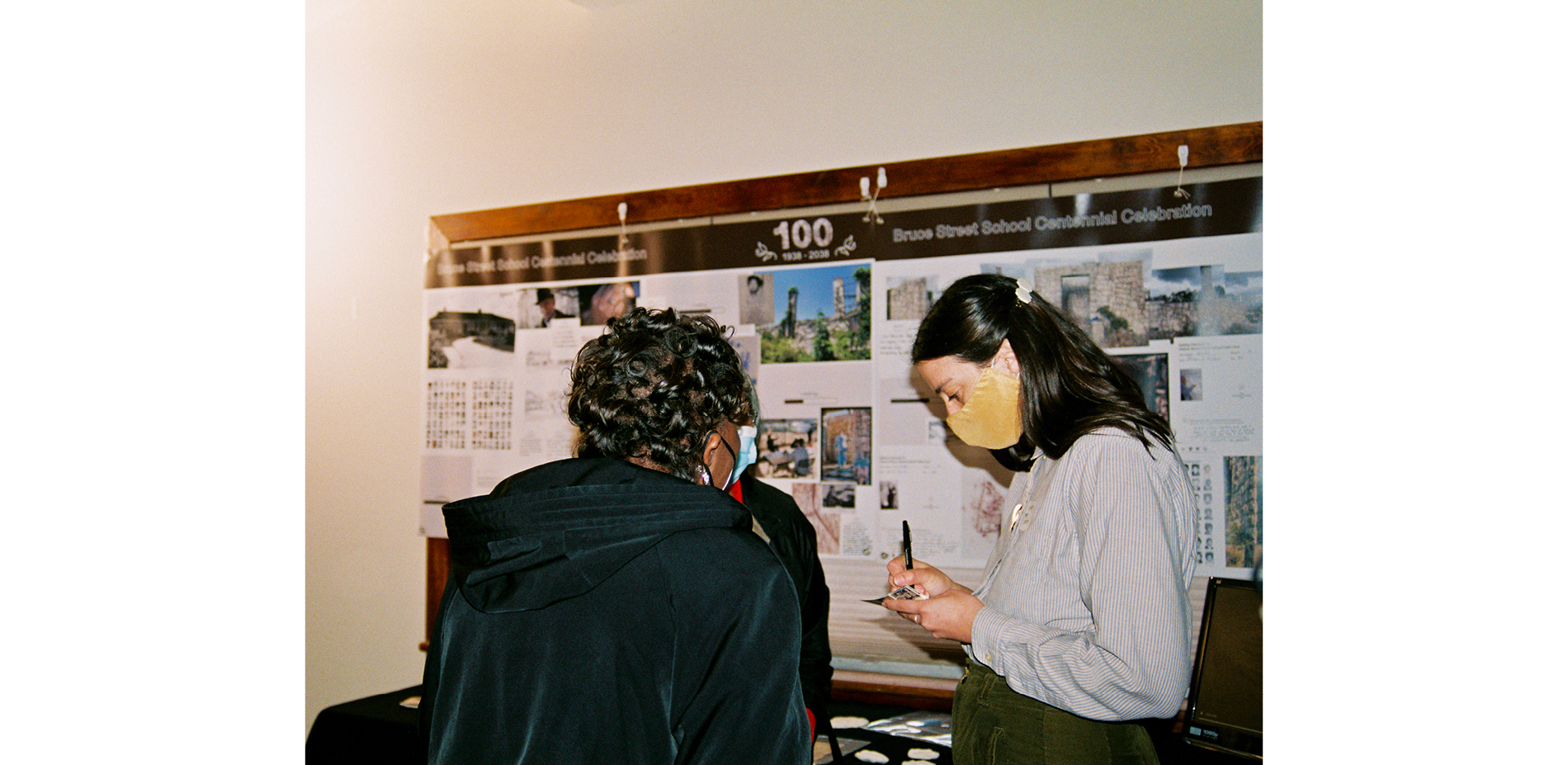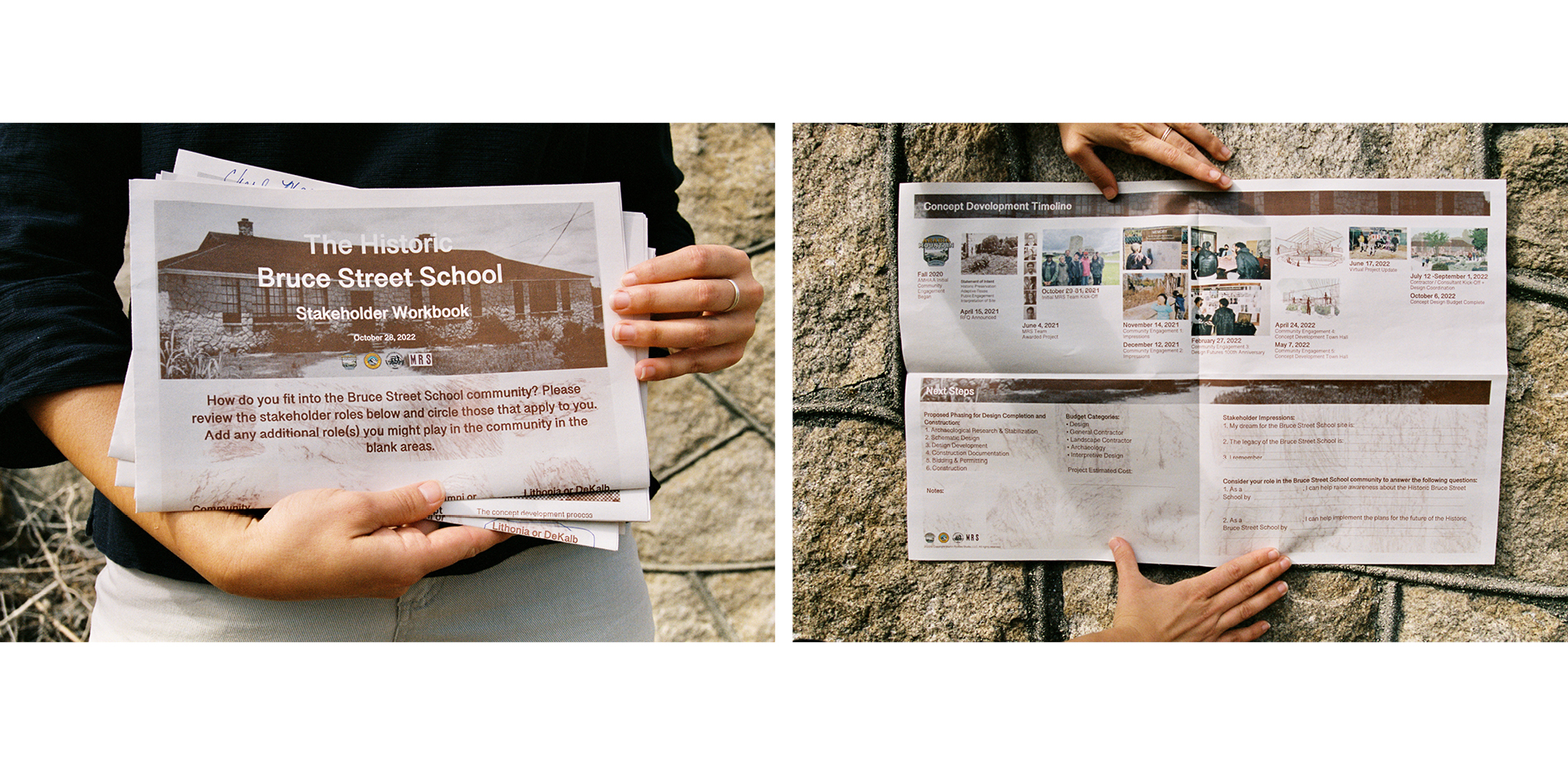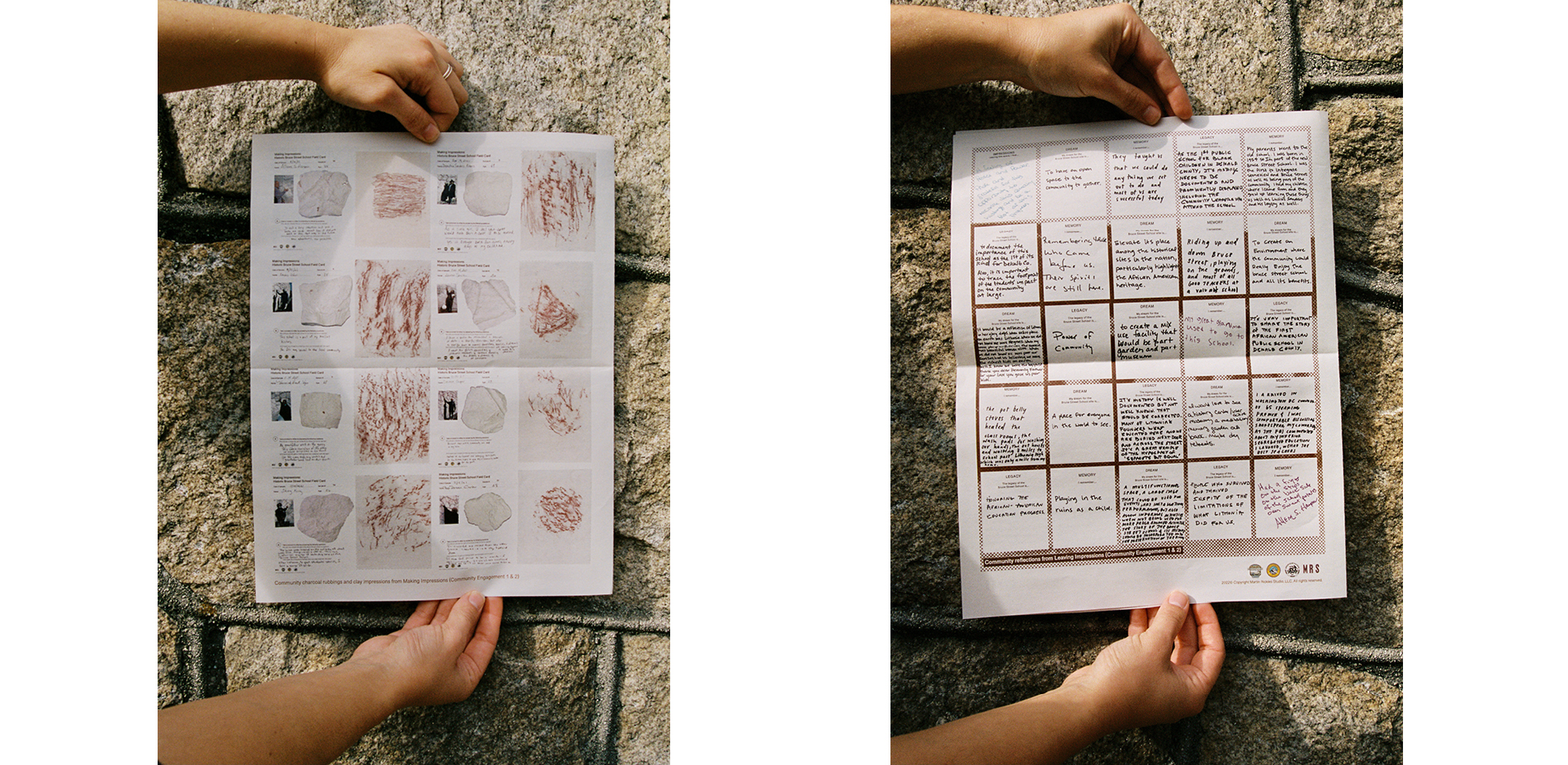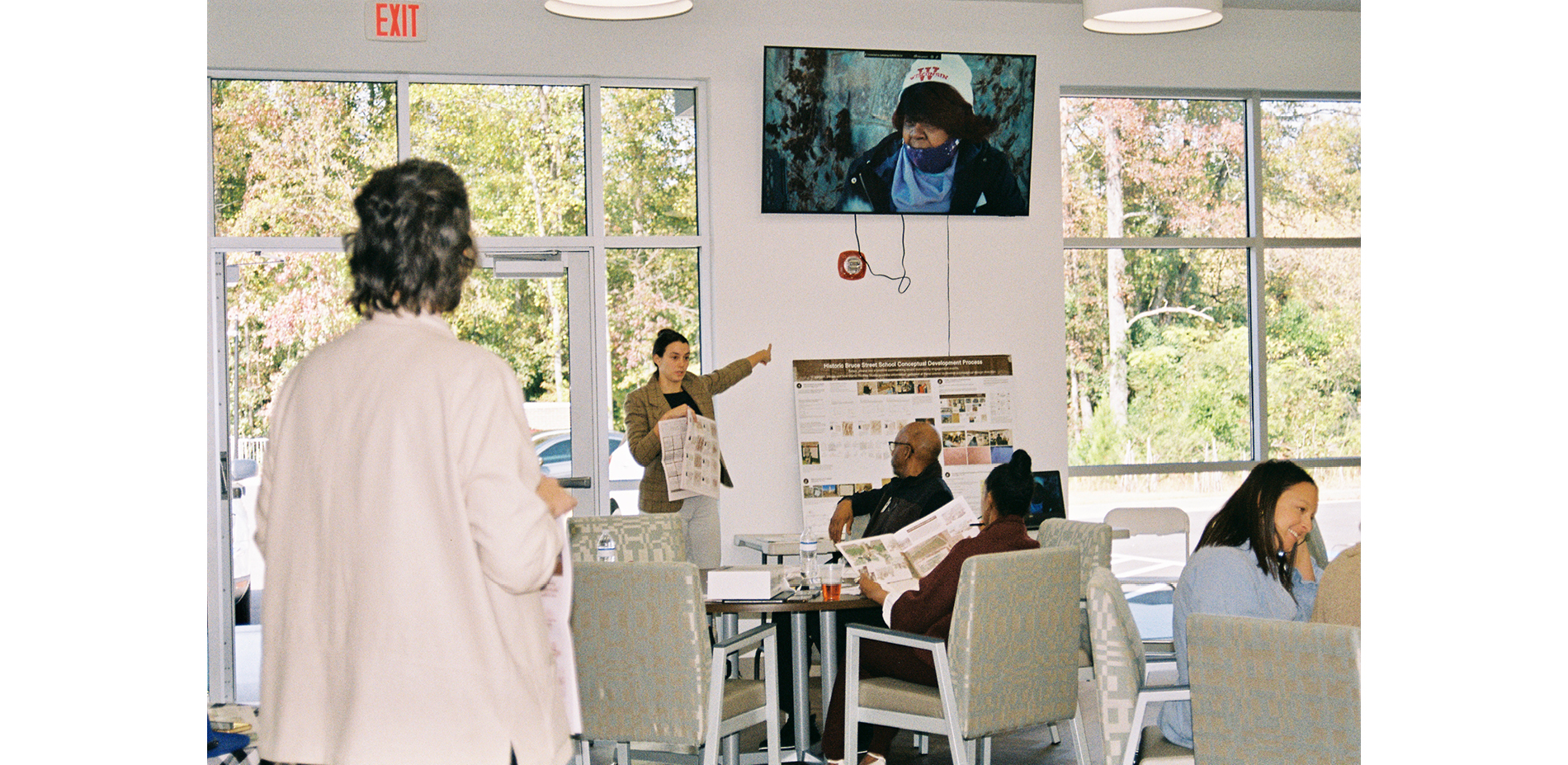The Historic Bruce Street School: A Community-Centered Design Approach
Honor Award
Communications
Lithonia, Georgia, United States
Martin Rickles Studio
Client: Arabia Mountain Heritage Area Alliance, DeKalb County, City of Lithonia
Innovative in both approach and method, this is a powerful process of listening, tracing memory and senses in a new and pure way. It’s a beautiful and unique exploration of sensory ethnography and oral history through the theme of “impressions”. This work reimagines how landscape architects can engage with communities to build connections, unearth collective memory, and activate our senses to explore possibilities for meaningful and sometimes painful places of our shared history.
- 2023 Awards Jury
Project Credits
Amy Landesberg, Artist, Architect
Iman Person, Artist
Anh-ton Tran, Design Researcher
Scott Morris, Architectural Historian
Jennifer Martin, Architect
Talecia Tucker, Photographer
R&D Studios, Photographer
Carley Rickles, ASLA, Landscape Designer
Arabia Mountain Heritage Area Alliance, Client Team
DeKalb County, Client Team
City of Lithonia, Client Team
Project Statement
To reimagine the ruins of the Historic Bruce Street School (also known as the Lithonia Negro School), the Design Team looked to the community. The Design Team stewarded this process with careful consideration by forming a community-centered and robust engagement plan that went above and beyond the typical design-focused public meeting format. The 7 public sessions accomplished the following: (1) They familiarized and re-familiarize stakeholders with the School’s history, and its physicality through sensory ethnography exercises. (2) They recorded oral and written histories. (3) They created a platform for community members to share their visions for the future and brainstorm ideas through virtual and in-person design futures workshops.
Project Narrative
The Bruce Street School (also known as the Lithonia Negro School) was the first public school for African American students in DeKalb County. It was built in 1938 on 6 acres of pine-covered land in the city of Lithonia, which was purchased through community-raised funds. The School remained in use until 1955, following the end of legal segregation. The students were relocated to an “equalization school” across the street and shortly thereafter the old building caught fire, leaving the stone walls exposed to ruin for the next 66+ years.
In 2006 the nonprofit Arabia Mountain Heritage Area Alliance was formed to oversee the Arabia Mountain National Heritage Area—a 40,000 acre cultural landscape which encompasses many of the landmarks in the City of Lithonia. In 2016 the City of Lithonia was listed in the National Register of Historic Places, with the Bruce Street School as a contributing structure. Shortly thereafter, the Alliance initiated the work for the preservation and reuse of the Bruce Street School ruins with the support of the School’s alumni and other community stakeholders. Through an RFP process in 2021, the Alliance selected a landscape architecture-led interdisciplinary team focused on community-centered design to shepherd the legacy of the School.
Over the course of a year the Design Team led 7 inclusive community engagement sessions with over 150 participants working to develop a conceptual design for the future of this important site. The first two sessions (centered on the theme of "Impressions") were focused on familiarizing (and re-familiarizing) the community and the Design Team with each other, the school’s history, and its current state of being. Four activities were planned around this theme: "Voicing Impressions," where oral history interviews with alumni were video-recorded; "Making Impressions," where participants created charcoal rubbings and clay impressions of the stone walls; "Space Impressions," where alumni helped retrace the rooms, outdoor spaces, individuals, objects, and activities of the site; and "Leaving Impressions," where participants shared their memories, feelings, and wishes for the School. These Impressions were archived and shared at the events to follow.
The next community engagement events were “design futures workshops,” where participants were prompted to imagine they were celebrating the 2038 centennial anniversary of the School. Attendees participated in group discussions and were given postcards to describe the atmosphere and activities taking place at the future School.
After a meticulous review of the artifacts produced during these initial engagement events, the Design Team identified three main themes which had emerged, and would be used to inspire physical and programmatic elements of the conceptual design: (1) welcoming and relaxing, (2) active learning and community, and (3) remembering and honoring.
The last 3 events were designed to walk community members through the final design direction, and its community involved process, and to take in feedback. At each of these events a thorough breakdown of the previous engagements and how they influenced the conceptual design was presented through project boards and workbooks.This resulted in a single consolidated conceptual design which, like the stone School building, was built up by the community one piece at a time.
